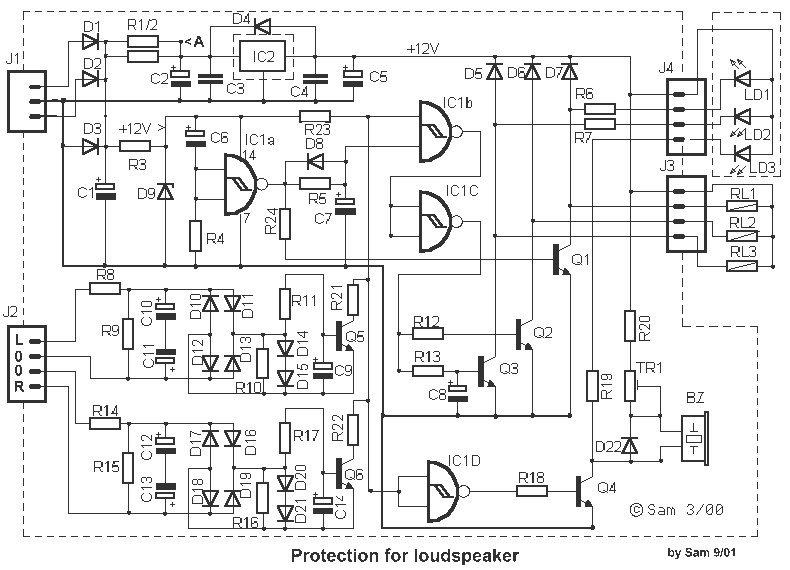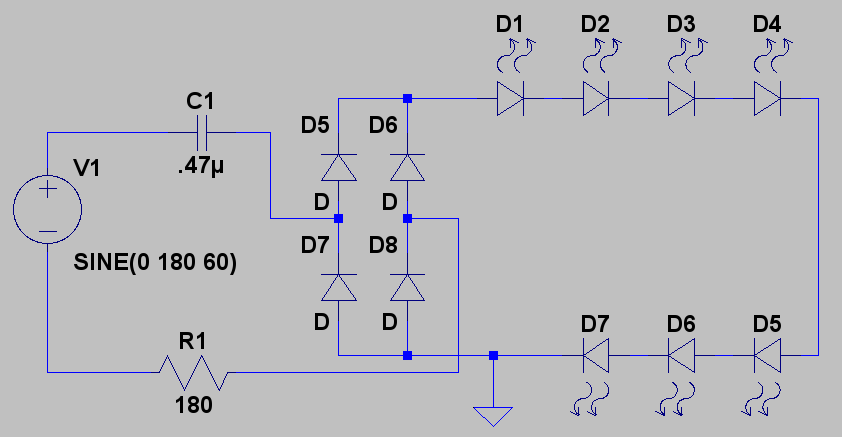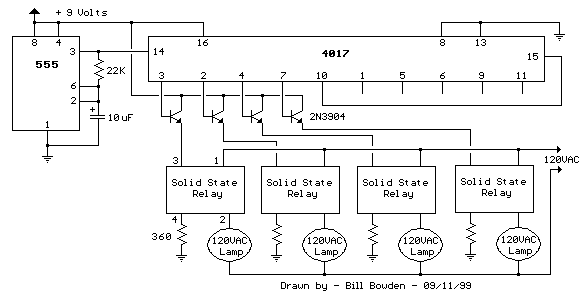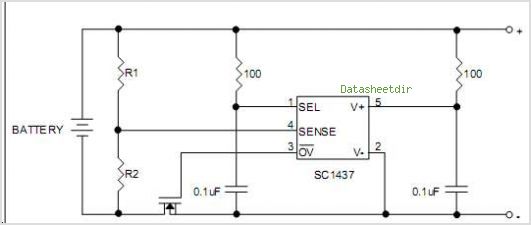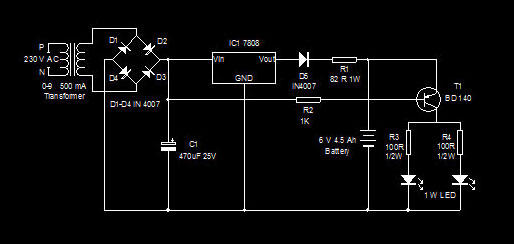
With a CD4013 Touch delay saving lamp production
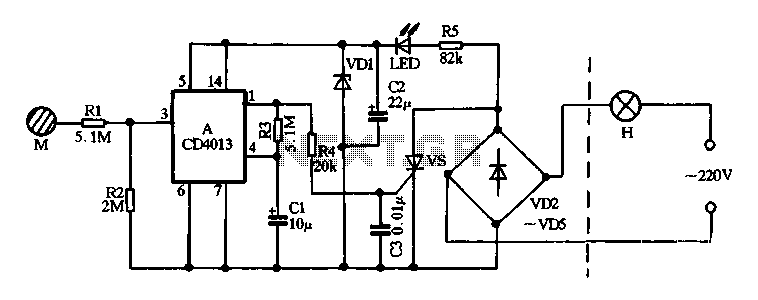
Diodes VD2 to VD5 and SCR form the main circuit of a touch switch. Resistor R5 and diode VD1 create a power supply circuit that outputs approximately 12V DC, which is utilized for a manifold A application. The circuit incorporates a D flip-flop, which is configured as a typical monostable (one-shot) circuit. In its steady state, the output terminal Q is low, keeping SCR in an off state, which prevents lamp H from illuminating. When a user touches electrode sheet M, a noise signal induced by the human body is transmitted through resistor R1 to pin 3 of the flip-flop, triggering a transition. This transition causes the output at pin Q to go high, allowing current to flow through resistor R4, which triggers SCR, turning on lamp H. Simultaneously, resistor R3 charges capacitor C1, causing the reset terminal at pin 4 to rise. Once this voltage reaches a certain threshold, it resets the circuit back to its stable state, returning pin Q to low. The SCR loses its trigger signal at the AC zero crossing, causing lamp H to turn off. An LED indicator is incorporated to show the switch's status, making it easier to locate in the dark.
The described circuit employs diodes VD2 to VD5 for rectification and protection, ensuring that the SCR operates efficiently within its specified parameters. The power supply circuit formed by R5 and VD1 is critical for providing stable voltage to the rest of the circuit components. The D flip-flop serves as a monostable multivibrator, which is essential for generating a single pulse output in response to the touch input. The interaction between the touch electrode and resistor R1 is crucial, as it allows the circuit to respond to external stimuli, thereby creating a user-friendly interface.
The SCR acts as a switching device that controls the lamp H based on the output from the flip-flop. The design ensures that the lamp remains off until the touch input is detected, at which point the SCR is triggered, allowing current to flow and illuminating the lamp. The charging of capacitor C1 through resistor R3 plays a vital role in the timing of the reset process, ensuring that the circuit returns to its original state after a predetermined duration, which is defined by the RC time constant of the circuit.
The LED indicator is an important feature for usability, providing visual feedback to the user regarding the switch's status. This is particularly beneficial in low-light conditions, enhancing the overall functionality of the circuit. The entire design emphasizes reliability and ease of use, making it suitable for various applications where touch-based control is desirable.Diode VD2 ~ VD5, SCR vs consisting touch switch main circuit, R5 and VDI constitute a power supply circuit, the output of about 12V DC voltage of about, for manifold A electric ity. A manifold of a D flip-flop, it then into a typical single -shot circuit, the output terminal Q or 1 foot output low steady state, so SCR vs off, lamp H does not shine. If people touch electrode sheet M, human induced noise signal via a resistor Rl added to the end, or manifold CP 3 feet, one-shot that is flipped into the transient, Q end, or l feet high output, this high power flat all the way through the resistor R4 as the trigger SCR vs vs number so quickly opened, namely H lamp lit; another pass resistor R3 to capacitor cl charged and the manifold reset terminal R or 4 foot level continues rise, when raised to the threshold level, the reset circuit, one-shot circuit to turn back to the stable state, l foot went back to its original low level, vs loss of trigger signal when the AC zero crossing that is turned off, the lamp H goes out.
LED light tube is used to indicate the switch position, switch easy to find at night.
The described circuit employs diodes VD2 to VD5 for rectification and protection, ensuring that the SCR operates efficiently within its specified parameters. The power supply circuit formed by R5 and VD1 is critical for providing stable voltage to the rest of the circuit components. The D flip-flop serves as a monostable multivibrator, which is essential for generating a single pulse output in response to the touch input. The interaction between the touch electrode and resistor R1 is crucial, as it allows the circuit to respond to external stimuli, thereby creating a user-friendly interface.
The SCR acts as a switching device that controls the lamp H based on the output from the flip-flop. The design ensures that the lamp remains off until the touch input is detected, at which point the SCR is triggered, allowing current to flow and illuminating the lamp. The charging of capacitor C1 through resistor R3 plays a vital role in the timing of the reset process, ensuring that the circuit returns to its original state after a predetermined duration, which is defined by the RC time constant of the circuit.
The LED indicator is an important feature for usability, providing visual feedback to the user regarding the switch's status. This is particularly beneficial in low-light conditions, enhancing the overall functionality of the circuit. The entire design emphasizes reliability and ease of use, making it suitable for various applications where touch-based control is desirable.Diode VD2 ~ VD5, SCR vs consisting touch switch main circuit, R5 and VDI constitute a power supply circuit, the output of about 12V DC voltage of about, for manifold A electric ity. A manifold of a D flip-flop, it then into a typical single -shot circuit, the output terminal Q or 1 foot output low steady state, so SCR vs off, lamp H does not shine. If people touch electrode sheet M, human induced noise signal via a resistor Rl added to the end, or manifold CP 3 feet, one-shot that is flipped into the transient, Q end, or l feet high output, this high power flat all the way through the resistor R4 as the trigger SCR vs vs number so quickly opened, namely H lamp lit; another pass resistor R3 to capacitor cl charged and the manifold reset terminal R or 4 foot level continues rise, when raised to the threshold level, the reset circuit, one-shot circuit to turn back to the stable state, l foot went back to its original low level, vs loss of trigger signal when the AC zero crossing that is turned off, the lamp H goes out.
LED light tube is used to indicate the switch position, switch easy to find at night.
Warning: include(partials/cookie-banner.php): Failed to open stream: Permission denied in /var/www/html/nextgr/view-circuit.php on line 713
Warning: include(): Failed opening 'partials/cookie-banner.php' for inclusion (include_path='.:/usr/share/php') in /var/www/html/nextgr/view-circuit.php on line 713
